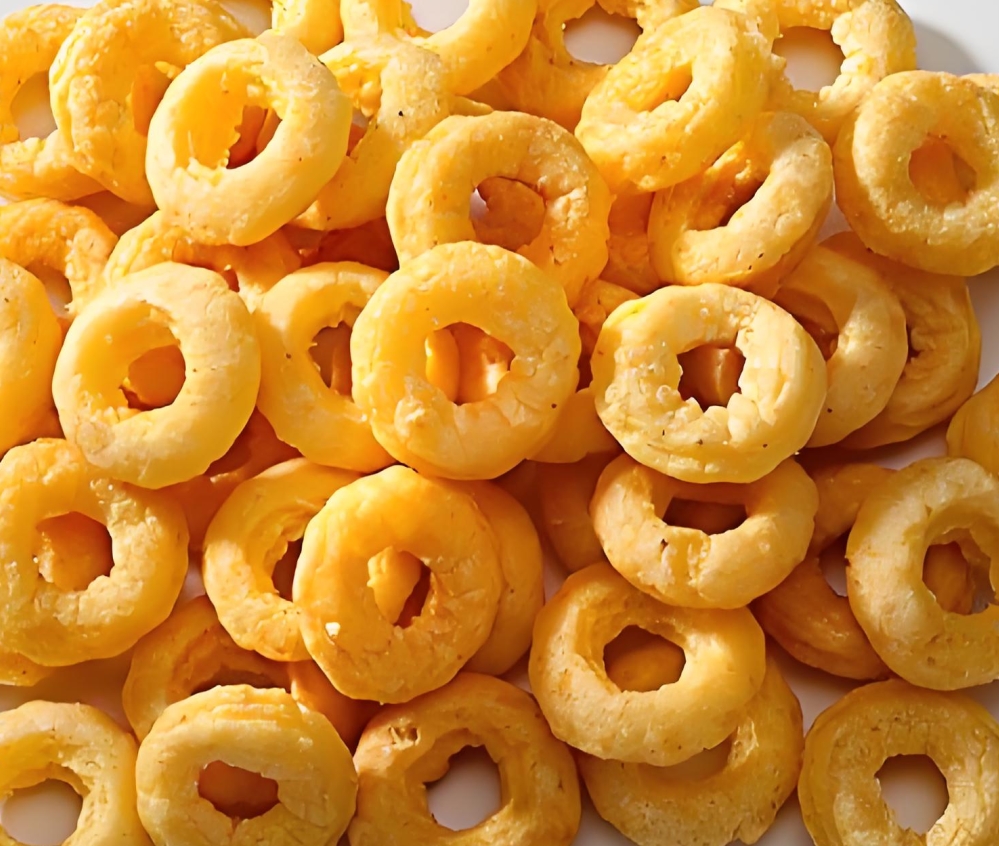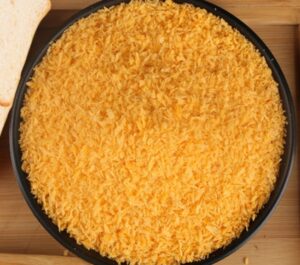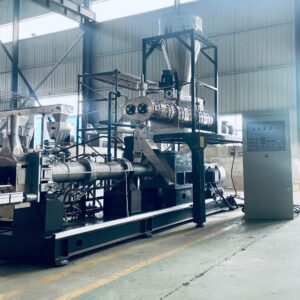<h1>The History and Development of Puffed Foods</h1>Introduction to Puffed Foods
Puffed foods, such as popcorn, puffed rice, and extruded snacks, are lightweight, airy products created through processes that expand grains or starches. These items have become staples in global diets, offering convenience and variety. For businesses in the foreign trade sector, understanding puffed foods is essential due to their high demand in export markets. This article explores their evolution from ancient practices to modern innovations, providing insights for B2B professionals.
Puffed snack food making machine
ToggleKey ingredients like corn, rice, and wheat are transformed using heat and pressure, resulting in products that are not only tasty but also versatile for packaging and distribution. In the context of international trade, puffed foods represent a lucrative category, with exports driven by consumer trends toward healthy, on-the-go snacks. This historical overview highlights how technological advancements have shaped the industry.
Ancient Origins of Puffed Foods
The roots of puffed foods trace back thousands of years, with early civilizations accidentally discovering puffing techniques. In Mesoamerica, ancient Mayans and Aztecs popped corn over open fires as early as 5000 BC, creating a simple yet nutritious snack. This method involved heating kernels until the moisture inside turned to steam, causing them to expand.
Similarly, in Asia, puffed rice was a common staple in ancient India and China around 3000 BC. People used rudimentary tools like heated sand or clay pots to puff grains, which were then used in ceremonies, meals, and as portable food for travelers. These early practices laid the groundwork for what would become a global phenomenon, influencing trade routes as early as the Silk Road.
For B2B exporters, recognizing these origins underscores the cultural significance of puffed foods, which can inform marketing strategies in regions like Latin America and Asia. Archaeological evidence shows that puffed grains were not only food but also symbols of abundance, linking historical consumption to modern export opportunities.
The Industrial Revolution and Technological Advancements
The Industrial Revolution in the 19th century marked a turning point for puffed foods, introducing machinery that scaled production. In 1893, at the World’s Columbian Exposition in Chicago, puffed rice and corn were demonstrated using steam-powered puffing guns invented by Alexander P. Anderson. This innovation allowed for mass production, making puffed foods more accessible and affordable.
By the early 20th century, companies like Quaker Oats began experimenting with extrusion technology, a process that forces dough through a die under high pressure and heat. This method, patented in the 1930s, revolutionized the industry by enabling the creation of uniform, shelf-stable products like puffed cereals and snacks. For foreign trade professionals, this era highlights the importance of patent protection and technological exports.
These developments boosted global trade, as puffed foods became easier to transport and store. Exporters in the U.S. and Europe started supplying markets in Africa and Asia, where demand for processed foods was rising. This period also saw the integration of puffed foods into military rations during World War I, further expanding their reach and establishing them as a reliable export commodity.
Post-World War Era and Globalization
After World War II, the puffed food industry experienced rapid growth due to advancements in food processing and packaging. In the 1950s and 1960s, companies like Kellogg’s and General Mills popularized extruded puffed snacks, such as corn chips and rice cakes, through innovative marketing and distribution networks. This era saw puffed foods transition from basic staples to branded consumer goods.
Globalization played a key role, with multinational corporations establishing factories in emerging markets. For instance, by the 1970s, puffed food exports from the U.S. to Europe and Asia surged, driven by trade agreements and improved logistics. B2B professionals in this sector benefited from standardized production techniques, which ensured consistency for international buyers.
Health trends also influenced development, with low-fat puffed options gaining popularity in the 1980s. Exporters capitalized on this by targeting health-conscious markets, such as Japan and Germany, where puffed foods were marketed as diet-friendly alternatives. This global expansion created new B2B opportunities, including partnerships for ingredient sourcing and co-manufacturing.
Innovations in the 21st Century
The 21st century has brought significant innovations to puffed foods, focusing on sustainability, nutrition, and customization. Advances in extrusion technology now allow for the incorporation of superfoods, fibers, and plant-based ingredients, creating healthier options like protein-packed puffed bars. This caters to the growing demand for functional snacks in B2B markets.
Companies are also adopting eco-friendly practices, such as using biodegradable packaging for puffed products, to meet regulatory standards in export destinations. For example, European Union regulations on food safety have pushed exporters to innovate, ensuring puffed foods comply with global standards. This has led to collaborations between manufacturers in Asia and importers in the West.
In the digital age, e-commerce platforms have transformed B2B trade for puffed foods. Businesses can now use data analytics to tailor products for specific markets, such as gluten-free puffed snacks for North America. These innovations not only enhance product appeal but also drive export growth, with the global puffed food market projected to exceed $50 billion by 2025.
The Role of Puffed Foods in Foreign Trade
Puffed foods have become a cornerstone of foreign trade, with countries like the U.S., China, and India leading in exports. These products are ideal for B2B transactions due to their long shelf life, lightweight nature, and adaptability to various cuisines. Exporters often partner with distributors to navigate tariffs and supply chain challenges.
In emerging markets, puffed foods represent an opportunity for economic development. For instance, African nations are increasing imports of puffed snacks to meet urban consumer demands, creating B2B avenues for suppliers. Trade shows and online platforms facilitate these connections, allowing businesses to showcase innovative puffed products.
Challenges like fluctuating raw material prices and regulatory hurdles must be addressed. Exporters can mitigate these by forming strategic alliances, such as joint ventures for puffed food production in target regions. Overall, the sector’s growth underscores the need for sustainable trade practices, ensuring long-term profitability for B2B stakeholders.
Frequently Asked Questions
Below are some common questions about the history and development of puffed foods, answered to provide clarity for industry professionals.
- What are puffed foods? Puffed foods are expanded grain or starch-based products created through heat and pressure, including items like popcorn and extruded snacks, which are popular in global markets.
- When were puffed foods first invented? The earliest forms date back to around 5000 BC in Mesoamerica with popped corn, evolving into industrial products in the 19th century through inventions like the puffing gun.
- How has technology impacted puffed food production? Extrusion technology, developed in the 1930s, has enabled mass production, improving efficiency and allowing for exports to international B2B partners.
- What role do puffed foods play in modern trade? They are key export commodities, with high demand for healthy variants, driving B2B opportunities in regions like Europe and Asia.
- Are puffed foods considered healthy? Many modern puffed foods are fortified with nutrients, but their healthiness depends on ingredients; innovations focus on reducing fats for export markets.
- How can businesses enter the puffed food export market? By investing in technology, complying with international standards, and building networks through trade events to connect with global buyers.
- What future trends are expected in puffed foods? Sustainability and personalization will dominate, with B2B exporters adapting to eco-friendly practices and customized products for diverse markets.
Conclusion
In summary, the history of puffed foods illustrates a journey from ancient traditions to a thriving global industry, driven by innovation and trade. For B2B professionals, this evolution offers valuable lessons on adapting to market demands, from technological advancements to sustainable practices. By leveraging this knowledge, businesses can capitalize on export opportunities and contribute to the continued growth of the puffed food sector, ensuring it remains a dynamic part of international commerce.









